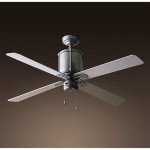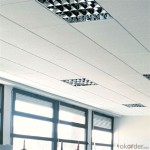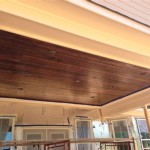How to Remove Water Stains From Your Car Ceiling
Water stains on a car's ceiling, also known as the headliner, are unsightly and can diminish the overall appearance of the vehicle's interior. These stains are often the result of leaks, condensation, or spilled liquids. Addressing these stains promptly and properly is crucial to prevent further damage, such as mold growth and deterioration of the headliner material. The process requires patience, careful technique, and the right cleaning solutions. Ignoring these stains can lead to more significant and costly repairs in the future.
The delicate nature of the headliner fabric necessitates a gentle cleaning approach. Harsh chemicals and abrasive scrubbing can cause the material to separate from its backing, leading to sagging and further damage. Identifying the type of material used for the headliner is essential. Common materials include fabric blends, vinyl, and suede-like microfiber. Understanding the material composition dictates the most appropriate cleaning agents and methods.
Before commencing any cleaning process, ensure the cause of the water stain has been resolved. Failure to address the underlying leak or source of moisture will render any cleaning efforts temporary. Inspect the seals around the windows, sunroof, and antenna for cracks or deterioration. Water might also be entering through damaged weather stripping or clogged drainage channels. A thorough investigation is necessary to prevent recurrence of the staining.
Key Point 1: Preparation and Material Assessment
The initial stage involves careful preparation. Gather the necessary cleaning supplies, which typically include a soft-bristled brush, microfiber cloths, a vacuum cleaner with a brush attachment, and appropriate cleaning solutions. Always test the chosen cleaning solution on an inconspicuous area of the headliner first to ensure it does not cause discoloration or damage. A small, hidden corner of the headliner, such as near the sun visor or dome light, is ideal for this test.
Vacuum the entire headliner surface using the brush attachment to remove loose dirt, dust, and debris. This step is crucial for preventing these particles from becoming embedded in the fabric during the cleaning process. Pay particular attention to crevices and seams where dirt tends to accumulate. This preliminary cleaning enhances the effectiveness of subsequent cleaning solutions.
Accurately identify the headliner material. For fabric blends, a mild upholstery cleaner is generally suitable. For vinyl, a vinyl-specific cleaner is preferable. Suede-like microfiber requires specialized microfiber cleaning solutions. Misidentifying the material can result in the use of inappropriate cleaning products that could cause irreversible damage. Consult the vehicle's owner's manual or a professional detailer if material identification is uncertain.
Proper ventilation is vital during the cleaning process. Open the car doors and windows to allow for adequate airflow. This helps to dissipate any fumes from the cleaning solutions and facilitates the drying process, minimizing the risk of mold or mildew growth. If possible, choose a dry, sunny day for cleaning to expedite drying. Avoid cleaning the headliner in humid conditions.
Key Point 2: The Cleaning Process
Apply the chosen cleaning solution sparingly to a clean microfiber cloth. Avoid spraying the solution directly onto the headliner. Over-saturation can lead to the adhesive weakening and the headliner separating from its backing. The goal is to dampen the cloth, not to soak the headliner fabric.
Gently blot the water stain with the damp microfiber cloth. Use a light, circular motion, working from the outside of the stain towards the center. This technique helps to prevent the stain from spreading outwards. Avoid applying excessive pressure, as this can damage the delicate fibers of the headliner material.
Regularly rotate the microfiber cloth to a clean area to prevent re-depositing dirt and grime back onto the headliner. Use multiple clean cloths throughout the cleaning process to ensure optimal results. A clean cloth will effectively lift the stain and absorb moisture.
If the stain persists, repeat the blotting process with a fresh application of cleaning solution. Allow the solution to dwell on the stain for a few minutes before blotting again. However, avoid prolonged soaking of the headliner. Monitor the headliner fabric closely for any signs of discoloration or damage. If any adverse effects are observed, discontinue use of the cleaning solution immediately.
For stubborn stains, consider using a specialized stain remover formulated for automotive interiors. Always test the stain remover in an inconspicuous area first, and follow the manufacturer's instructions carefully. Some stain removers might require a longer dwell time or specific application techniques.
Once the stain has been removed or significantly reduced, use a clean, dry microfiber cloth to blot the area and absorb any remaining moisture. This helps to prevent water spots from forming. Ensure the cloth is completely dry to avoid introducing more moisture to the headliner.
Key Point 3: Drying and Maintenance
Allow the headliner to air dry completely. Keep the car doors and windows open to promote air circulation. The drying process can take several hours, depending on the humidity and temperature. Avoid using a hairdryer or other heat source to speed up the drying process, as this can cause the headliner adhesive to weaken.
If possible, park the car in direct sunlight to expedite the drying process. Sunlight can help to evaporate moisture and inhibit the growth of mold and mildew. However, be mindful of potential UV damage to the vehicle's interior. Consider using a sunshade to protect the dashboard and other sensitive surfaces.
Once the headliner is completely dry, vacuum it again with the brush attachment to remove any remaining residue or loose fibers. This final vacuuming helps to restore the original texture and appearance of the headliner.
To prevent future water stains, regularly inspect the vehicle for leaks. Address any leaks promptly to avoid water damage. Consider applying a fabric protectant to the headliner to repel water and stains. These protectants create a barrier on the fabric surface, making it more resistant to spills and stains. Follow the manufacturer's instructions carefully when applying fabric protectants.
Regular cleaning and maintenance are essential for preserving the appearance and integrity of the car's headliner. Vacuum the headliner periodically to remove dust and debris. Clean up spills immediately to prevent staining. By taking these preventative measures, the need for extensive and potentially damaging cleaning will be minimized.
In instances where the water stain is extensive, deeply embedded, or the headliner material is particularly delicate, seeking professional detailing services is recommended. Professional detailers possess the specialized equipment, cleaning solutions, and expertise to effectively remove water stains without causing damage to the headliner. They can also assess the overall condition of the headliner and recommend appropriate repair or replacement options, if necessary.
Attempting to remove stubborn stains with harsh chemicals or abrasive scrubbing can lead to irreversible damage to the headliner. This damage can include discoloration, fraying, and separation of the fabric from its backing. Repairing or replacing a damaged headliner can be a costly undertaking, so it is crucial to proceed with caution and seek professional help when needed.
By following these guidelines and exercising patience, it is possible to effectively remove water stains from your car's ceiling and restore its appearance. Remember that prevention is key, and addressing leaks promptly will prevent future staining and damage. Consistent maintenance and care will ensure the longevity and aesthetic appeal of the vehicle's interior.

Diy Car Headliner Water Stain Removal Guaranteed

Headliner Deep Clean Stain Removal

How To Clean A Car Interior Roof Easy Steps Expert Tips

How To Clean Car Headliner Stain Removal

How To Clean A Car Interior Roof Easy Steps Expert Tips

How To Clean Roof Upholstery In A Car The Leather Colour Doctor

How To Clean A Car S Headliner

How To Clean Car Headliner Factory New In One Weekend

How To Clean Roof Upholstery In A Car The Leather Colour Doctor

How To Clean A Car Interior Roof Easy Steps Expert Tips
Related Posts








